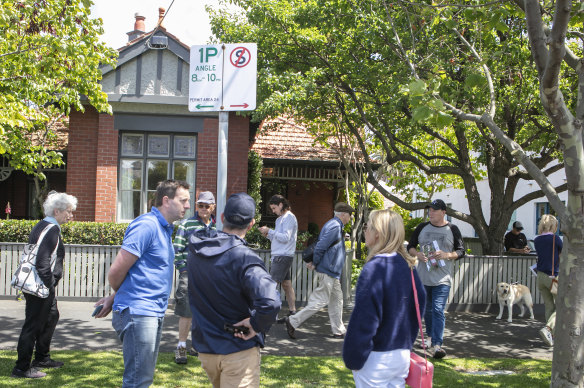‘Dramatic slowdown’: How property values changed after years of higher rates
Home values have slowed due to high interest rates and stretched affordability, down 0.4 per cent in Melbourne and up only 0.3 per cent in Sydney in July.
Buyers are unable to borrow as much money as they could two years ago, restricting how much they can spend on a property, but sellers are still pushing ahead with campaigns, property researcher CoreLogic found.

Housing values have slowed due to high interest rates and stretched affordability. Credit: Stephen McKenzie
Sydney’s median home value is now 1.1 per cent higher than three months ago, a more modest gain than the 5 per cent recorded in the same period last year, the CoreLogic Home Value Index for July, released on Thursday, found.
Melbourne home values fell 0.9 per cent over the past three months, and its median dwelling value is likely to be overtaken by Adelaide in the coming weeks.
Property markets have been rising faster elsewhere, such as Perth (up 2 per cent in a month and 6.2 per cent in the quarter) and Brisbane (up 1.1 per cent in a month and 3.8 per cent in the quarter).
CoreLogic head of Australian research Eliza Owen said a series of interest rate rises since 2022 have slowed the economy.
“The amount of [home] buyers is dwindling a little, and the balance between buyers and sellers is narrowing,” she said.
“There are more people looking to sell than this time last year, and demand is only just trending above that at the national level. So the result is continued growth, but the pace of that growth is going to be slowing down.”
Melbourne bucked the trend, edging lower for a fourth consecutive month with more sellers than buyers, she said.
“People [are] still trying to sell even though the market is weak which could suggest some level of mortgage stress affecting Melbourne,” she said.
Melburnians have been leaving the city since COVID began, and even though international migrants have been arriving, they tend to rent first rather than buy, she said.
“Investor activity has been pretty subdued, but that could be tied to the weak capital growth. Additional levies may be spooking investors as well.”
The Victorian government has increased the land tax payable by investors, prompting some to reconsider the costs and benefits of holding on to their property.
By contrast, in Sydney, home values are still rising, but the rate of growth has had a “dramatic slowdown” that has been more distinct among houses than units, she said.
“[It’s] probably not surprising given the gap between house and unit values that’s blown out to $620,000 as of July, or about 73 per cent,” she said.
The areas that are growing quickly are the cheapest such as Canterbury, Mount Druitt, and Fairfield, she said.
“It’s definitely the higher end of the market that’s a bit weaker.”
Owen said high interest rates, high land prices and high construction costs were also making it a challenge to build more new homes.
She said a potential undersupply of homes would keep a floor under values, but an elevated pipeline of units yet to be completed might take some of the edge off ongoing price growth.
The inflation figures on Wednesday printed at a 3.8 per cent annual rate, which some economists thought meant the Reserve Bank would not have to lift interest rates any higher and could look towards cuts. Owen said many home buyers were likely to factor in potential future rate cuts into their purchasing decisions, tipping housing values to keep rising but not as fast as previously.
Westpac senior economist Matthew Hassan said housing affordability in both Sydney and Melbourne was becoming stretched, which restrains how fast they could keep rising.
He thought the faster-rising markets of Brisbane, Adelaide, and Perth would eventually start to run into the same issues.
He said Melbourne’s market was not overly weak but had some investment properties for sale that were not being snapped up.
“In the case of Melbourne, there is an added wrinkle around a couple of things; firstly, the state government’s tax changes last year which triggered selling by investors, so there’s a bit of an overhang of stock,” he said.
“It’s a softer economy … wages growth is a bit weaker.”
He thought overall price growth would continue but taper off in pace as buyers who cannot afford a home stopped looking to buy one. Interest rates could fall gradually over the next 12 months, but this was unlikely to cause significant changes, leaving the market with stretched affordability and an undersupply of homes.